Special for the Armenian Weekly
19-year-old Adam’s coffin was closed; it couldn’t be kept open—not this time… There is a tradition in Armenia of keeping the coffins of the deceased open—for loved ones to hold the dead one last time.
“When Adam was buried, and the funeral service was over, I approached his brother. He was tightly holding Adam’s photo, weeping. His eyes were fixated on his brother’s grave. I expressed my condolences and hugged him. He hugged me back. ‘Stay strong,’ I said. His wet eyes stared back at me. ‘I’m a soldier, too,’ he said. I was speechless,” recounted Ara Keuhnelian, a Diasporan Armenian who resides in Egypt.
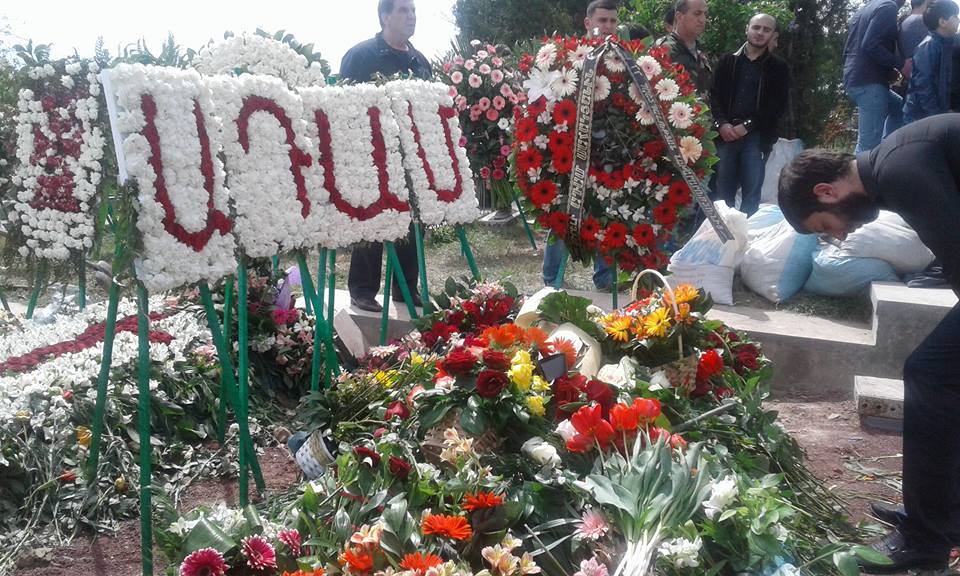
’19-year-old Adam’s coffin was closed; it couldn’t be kept open—not this time.’ (Photo: Ara Keuhnelian)
Keuhnelian was on a short trip to Armenia when the recent developments in the Nagorno-Karabagh Republic (NKR/Artsakh) jolted the country. Keuhnelian and hundreds of others who never knew Adam still found themselves at the funeral of the young serviceman on April 12.
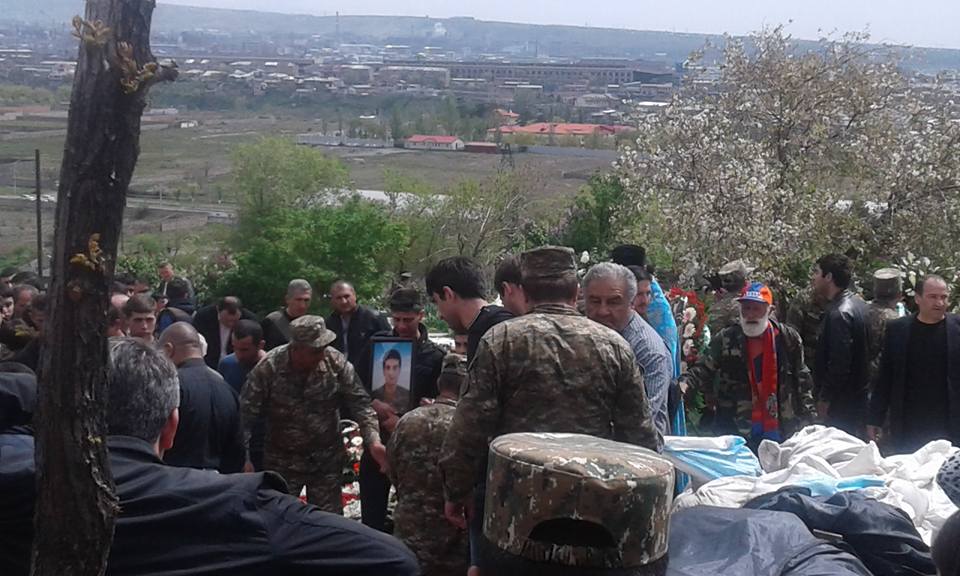
‘When Adam was buried, and the funeral service was over, I approached his brother. He was tightly holding Adam’s photo, weeping.’ (Photo: Ara Keuhnelian)
Photographs of Adam had quickly spread on social media—he was one of the missing servicemen following Azerbaijan’s attacks on the NKR Line of Contact (LoC) on April 2-5. There was still hope that Adam would be found alive. However, the day that»Armenia’s Ministry of Defense announced the return of the bodies of 18 martyred soldiers was the day news spread that Adam had been killed.
Following the exchange of bodies between Artsakh and Azerbaijan on April 10, the NKR State Commission on Prisoners of War, Hostages, and Missing Persons registered that all of the bodies of the deceased servicemen transferred by Azerbaijan had visible signs of torture and mutilation.
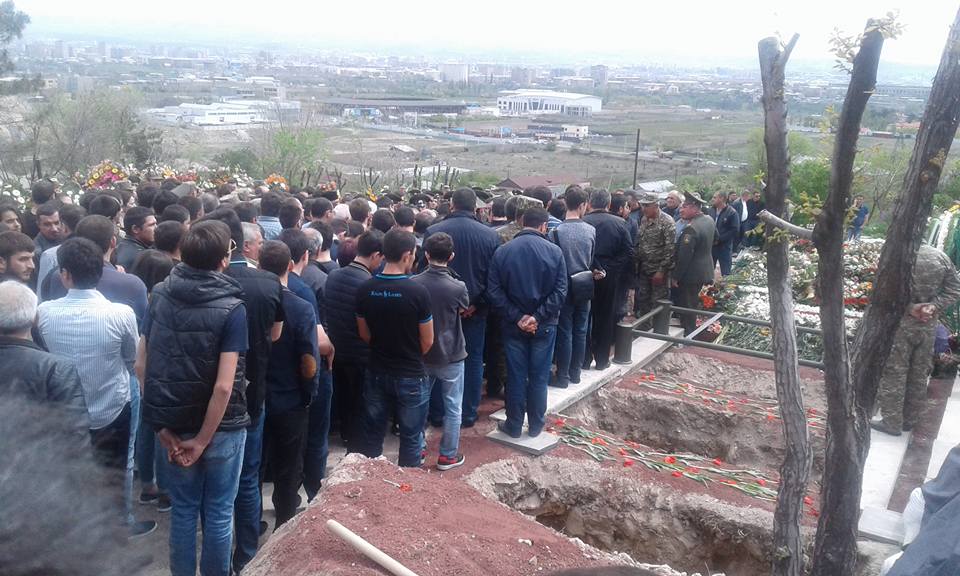
‘Keuhnelian and hundreds of others who never knew Adam still found themselves at the funeral of the young serviceman on April 12.’ (Photo: Ara Keuhnelian)
Adam Sahagian was born on Aug. 19, 1996, in Yerevan. He attended Yerevan’s school number 14. He was then accepted and enrolled in Yerevan State University’s Faculty of Architecture.
“The future architect left his studies during his second year [at the university] and joined the Armenian Army to defend Artsakh’s southeast borders. The lively and enthusiastic Adam, with his strong body, captured the attention of his commanders from the day he joined the army,” said a Defense Ministry spokesperson in a speech on the day of Adam’s funeral. Sahagian had enrolled in a course that would allow him to become a troop commander, added the spokesperson.
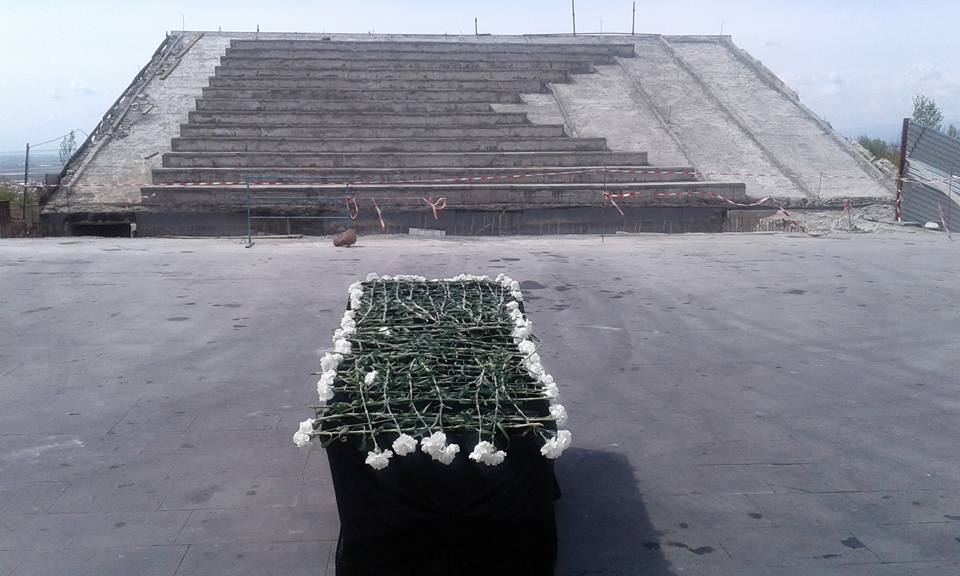
Adam Sahagian was born on Aug. 19, 1996, in Yerevan. (Photo: Ara Keuhnelian)
“The mission to defend the borders of the homeland was sacred to Adam. On the evening of April 1, the enemy started large-scale military operations. When the enemy savagely attacked our lands, they had to be stopped by any means,” said the spokesperson. “Those young 18- to 20-year-old soldiers fought with a special will—until they shed their last drop of blood; until they were martyred. Dear Adam, we are grateful for your selfless and heroic actions… We will always remember this tragic loss. We are in deep pain, yet so proud of you.”
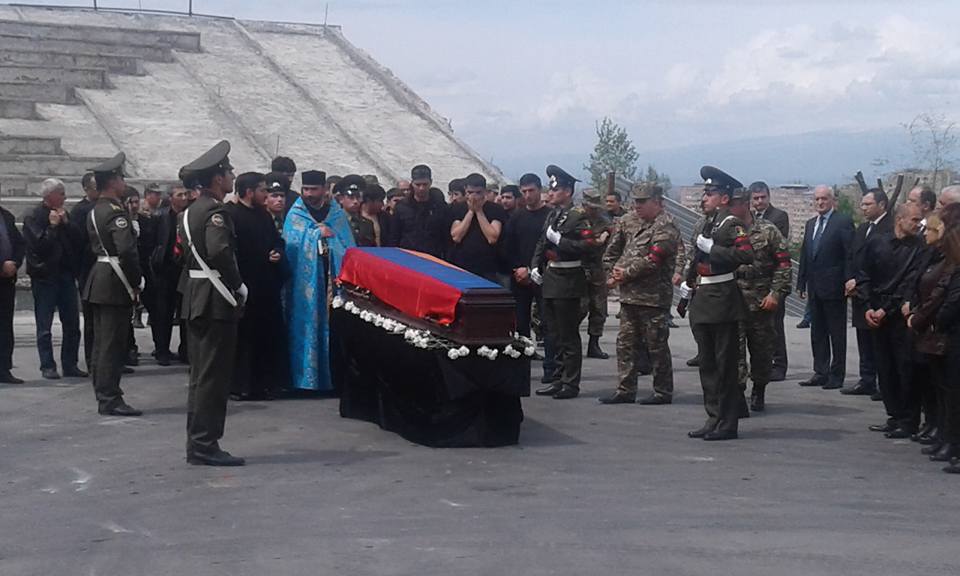
‘Dear Adam, we are grateful for your selfless and heroic actions… We will always remember this tragic loss. We are in deep pain, yet so proud of you.’ (Photo: Ara Keuhnelian)
Around 80 Armenian soldiers and volunteer servicemen gave their lives, and 250-300 servicemen were wounded, in the past 10 days. Thousands took to the streets of Yerevan on April 10 to pay their respects to their fellow Armenians killed in the attacks. A silent candlelit march started at Shahumian Square and reached Yerablur, the military cemetery located at the top of a hill in the outskirts of Yerevan. Since 1988, the cemetery has become the burial place for those who have given their lives during the Artsakh War.
Among the heroes buried at Yerablur are Monte Melkonian, Shahen Meghrian, Mher Choulhajian, Vicken Zakarian, Vazken Sargsyan, Antranig Ozanian (died in 1927, reburied in 2000), and Sose (Mayrig) Vartanian (died in 1952, reburied in 1998).
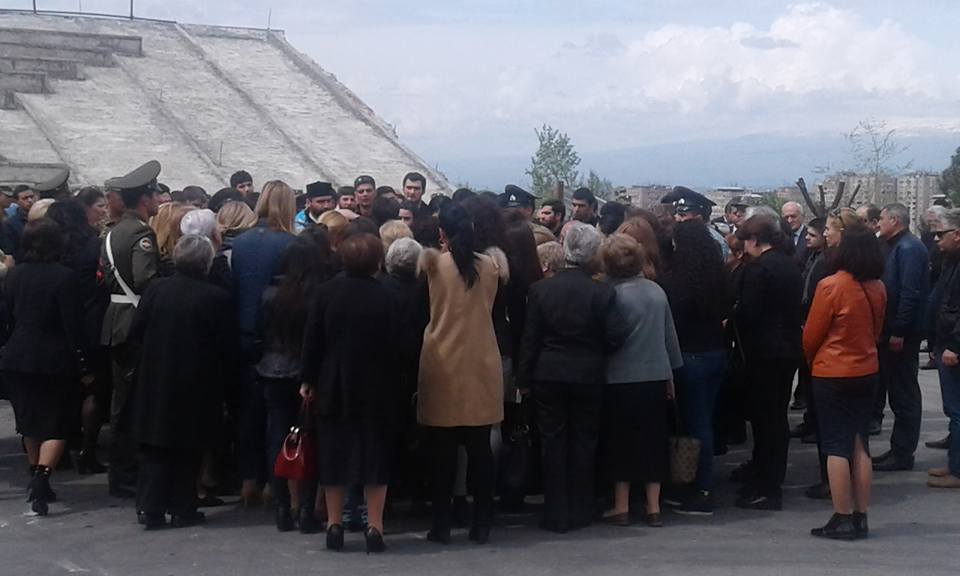
Since 1988, the cemetery has become the burial place for those who have given their lives in the Artsakh War. (Photo: Ara Keuhnelian)
Yerablur is one of the “must visit” places in the motherland. It is not a joyful place, yet it is one of the most emotional and peaceful sites in the capital, with an impressive view of Mount Ararat—the mountain that still remains outside Armenia’s borders, yet watches over the fallen Armenian soldiers. If one has any doubt as to how the Armenian nation has survived until today, they may find their answer there, at the cemetery.
Each time Defense Ministry spokesperson Ardzrun Hovhannissian announces the names and publishes the photographs of fallen soldiers during the battles in the Karabagh-Azerbaijan conflict, he adds this note: “We mourn but we are proud.” It is a sentiment that is echoed in Artsakh, Armenia, and the far corners of the Armenian Diaspora.
Special for the Armenian Weekly 19-year-old Adam’s coffin was closed; it couldn’t be kept open—not this time… There is a tradition in Armenia of keeping the coffins of the deceased open—for loved ones to hold the dead one last time. “When Adam was buried, and the funeral service was over, I approached his brother. He was tightly holding Adam’s photo, weeping. His eyes were fixated on his brother’s grave. I expressed my condolences and hugged him. He hugged me back. ‘Stay strong,’ I said. His wet eyes stared back at me. ‘I’m a soldier, too,’ he said. I was speechless,” recounted Ara Keuhnelian, a Diasporan Armenian who resides in Egypt. ’19-year-old Adam’s coffin was closed; it couldn’t be kept open—not this time.’ (Photo: Ara Keuhnelian) Keuhnelian was on a short trip to Armenia when the recent developments in the Nagorno-Karabagh Republic (NKR/Artsakh) jolted the country. Keuhnelian and hundreds of others who never knew Adam still found themselves at the funeral of the young serviceman on April 12. ‘When Adam was buried, and the funeral service was over, I approached his brother. He was tightly holding Adam’s photo, weeping.’ (Photo: Ara Keuhnelian) Photographs of Adam had quickly spread on social media—he [...]
Special for the Armenian Weekly 19-year-old Adam’s coffin was closed; it couldn’t be kept open—not this time… There is a tradition in Armenia of keeping the coffins of the deceased open—for loved ones to hold the dead one last time. “When Adam was buried, and the funeral service was over, I approached his brother. He was tightly holding Adam’s photo, weeping. His eyes were fixated on his brother’s grave. I expressed my condolences and hugged him. He hugged me back. ‘Stay strong,’ I said. His wet eyes stared back at me. ‘I’m a soldier, too,’ he said. I was speechless,” recounted Ara Keuhnelian, a Diasporan Armenian who resides in Egypt. ’19-year-old Adam’s coffin was closed; it couldn’t be kept open—not this time.’ (Photo: Ara Keuhnelian) Keuhnelian was on a short trip to Armenia when the recent developments in the Nagorno-Karabagh Republic (NKR/Artsakh) jolted the country. Keuhnelian and hundreds of others who never knew Adam still found themselves at the funeral of the young serviceman on April 12. ‘When Adam was buried, and the funeral service was over, I approached his brother. He was tightly holding Adam’s photo, weeping.’ (Photo: Ara Keuhnelian) Photographs of Adam had quickly spread on social media—he [...]
[img][/img]
More...